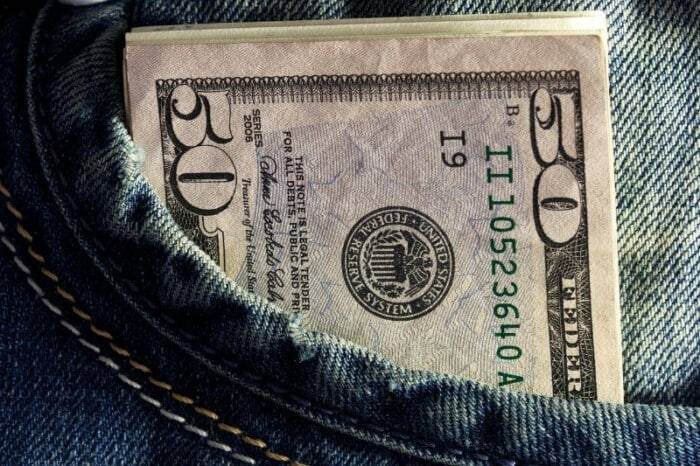
People say that time is money, but have you ever thought about how valuable your time is? If you’re just getting started in the world of freelancing – welcome. Now it’s time to sit down and figure out what your hourly rate is! Luckily for you, you came to the right place.
In this article, I’m going to tell you the secret of how to calculate my freelance rate.
Using a Freelance Rate Calculator
Before diving deeper into the question, I want to provide a quick answer. What I personally use is a freelance rate calculator. This quickly does all the math for you after you plug in a few numbers. If you want the fastest approach when you’re asking yourself the question, “How do I calculate my freelancer hourly rate?” then definitely use a calculator.
To understand each of the steps, keep reading.
Why Does Your Hourly Rate Matter?
There are many reasons why you should care about your hourly rate as a freelancer. Let me tell you some of the big reasons.
Compare it to the Job Market
When looking at a job offer, one of the biggest things you should care about is the salary. In the case of freelancing, you’re not going to have a salary. Places like Fiverr will pay you per project.
To compare apples to apples, you’ll need to know your hourly rate. It’s a good gauge to tell you how you’re doing.
Make Sure You Can Pay Your Bills
Secondly, it lets you do the math to make sure you can pay your monthly bills. If you make a certain amount an hour, you know how many hours you need to work in a month to get your bills paid.
This should arguably be the biggest reason why your rate matters.
It is more tedious to manage taxes as a self-employed freelancer because of the range of projects, workload, and taxes to mind. But managing taxes is now easier because there is tax software that freelancers can use to handle taxes.
Helps You Track Your Improvement
You’re just starting out, so your rate might be lower than you want it to be. For most people, the more years they work in the industry, the higher their hourly pay.
By understanding your hourly pay, you track your improvement from year to year. It helps you physically see the reward of hard work.
See Related: Time Tracking Apps for Freelancers
Allows You to Price Yourself to a Client
Finally, knowing your hourly rate allows you to give a prospective client a firm price. You know that historically people pay a certain amount of money for your services. That’s a good starting point when negotiating a rate with a potential client.
If you want to work for exclusive freelancing sites like Toptal, then you need to be able to price yourself accordingly.
You can bid on a project with confidence because you have done the math and you know your true rate. It’s the equivalent of going to a job interview and telling them your required salary.
Besides figuring out your hourly rate in freelancing, it is also important to know about paying taxes as a freelancer. This includes learning what are and what should be the tax deduction for freelancers and other tax-related topics.
See Related: How Much is $45,000 a Year Hourly? (An Hourly Wage Analysis)
Calculating a Salary from an Hourly Rate
Speaking of salaries, did you know that you can convert from salaries to hourly rates and vice versa? It’s a really simple math equation. I used to work in the world of salaries, so now that I’m a freelancer, I like to do the math to get a general understanding of where I am.
Let’s say that you’re making $10 an hour as a freelancer. Not too shabby. Well, the typical working year in corporate America is 2,080 hours. That means that if you want to convert your hourly rate to a salary, then you’re going to multiply $10 x 2,080. That gives you $20,800 a year.
The same is also true if you want to go the other way.
See Related: Freelance vs Self-Employed
Targeting a Salary
This leads me to my next point. If I want to know how to calculate my freelance rate with a targeted salary in mind, I’ll use the math from above.
A lot of freelancers who first make the jump to freelancing have a certain amount of money they need to make each year to make ends meet. Let’s say I made $50,000 in my office job that I just left to be a freelancer. If I want to replace my income, I’ll divide $50,000 / 2,080. That gives me my targeted hourly rate.
In this case, it’s $24.04 an hour.
Suppose you’re new to freelancing; you’ll probably wonder how to set up a rate with your client. Negotiating freelance rates in Toptal is allowed; freelancers can bid with clients until both parties agree on a settled rate.
The Steps to Calculate Freelance Hourly Rate
So now I get to talk about the fun stuff. I’m going to explain the five steps that are used to calculate the freelance hourly rate. If you look at the freelance rate calculator I mentioned earlier, you already have a head start here.
Buckle up because there will be a decent amount of information here. I hope that you can do it yourself after you read my notes.
See Related: Tax Software for Freelancers & Self-Employed
Step 1: Target an Annual Salary
This was briefly explained a second ago, but this is the most important step. You want to target a realistic salary that will keep you financially stable.
Remember that the first year of freelancing might not be as lucrative as you want. That shouldn’t discourage you! Just remember it as you’re putting together a target salary.
For this example, I want to make $85,000 a year. Imagine that I’m leaving an office job making $70,000, and I want to brag about my new career in freelancing to my old coworkers!
Step 2: Calculate Expenses and Overhead
Now it’s time for some math. Since you’re self-employed, there are some extra expenses that you’ll have to consider.
One of the most important steps in calculating my freelance rate is understanding my expenses in detail.
There are a lot of different factors that will determine the amount in this section, but here are some general categories that might pertain to you, along with arbitrary yearly costs. These figures are loosely based on numbers I calculated for myself in the past.
Office Space – $5,000
Do you have a special area in which you do your freelancing? Some people can claim part of their home as their office space and use that as a write-off later.
Maybe you signed up for a co-working space that you share with others. Pay attention to how much this costs you.
Web Hosting – $400
If you have a site, then you’re familiar with web hosting fees. If you’re making a site, you can expect to pay a few hundred here.
This is an area where it pays to spend a little. A strong, well-designed website will attract people to you.
Software – $800
You might use accounting, project management, and/or industry-specific software for your operation. Keep a tally of how much the software subscriptions add up to a year.
Internet – $1,000
Your online freelancing operation is nothing without your internet package. You can include some or all of the price if you use a home office for freelancing.
Work Devices – $2,000
Computers, phones, tablets, laptops, and other devices you use for work should also be accounted for.
Marketing – $1,500
Sometimes you have to spend a little to make a little. Marketing campaigns like ads, flyers, and promotions will go in this category.
Uncollected Payments (Roughly 2% Of Revenue) – $1,700
Whenever payments are required, some clients try to weasel out of paying. To be conservative, assume that 2% of your revenue will go uncollected or unpaid.
Tax Prep – $1,000
Now, consider the costs associated with bringing in a professional tax advisor. Since your income will be more complex this year, you’ll probably need to opt for quarterly filing. Tax pros might charge freelancers more than a typical W9 employee because there are more moving parts and paperwork.
Self-Employment Tax – $6,500
Your self-employment tax is going to vary on a lot of different factors. In this example, I’m paying around 8% of my income in self-employment tax.
Medical Insurance – $6,000
You might expect to pay around $500 monthly for medical insurance. Again, this number will vary a lot depending on your specific situation.
Final Count
Adding together all of the expenses and overhead will get you a final number. For this example, I expect to spend $25,900 a year!
This might seem like a lot of money. Now is a good time to look through the budget and see if anything can be reduced or removed to reasonably reduce my expenses. Maybe I will find a less expensive office and I opt for older devices.
See Related: Freelance Jobs for Beginners
Step 3: Calculate the New Adjusted Annual Salary
With your final expense handy, it’s time to calculate your “new adjusted annual salary”. This adjustment takes your desired salary and factors in the associated expenses from step 2.
In my example, my $85,000 desired salary will be added to my $25,900 in expenses.
This leaves me with a value of $100,900. This figure is my adjusted annual salary. In other words, this is the amount of money I will actually have to make if I want to take home $85,000.
See Related: Fiverr vs Freelancer
Step 4: Figure Out Your Annual Billable Hours
Now we’ll revisit the idea discussed earlier about billable hours. As a reminder, billable hours are how many hours you physically work. If you feel lost at this point, you can check out FreelancerNomads to get more clarification.
If you have a 9-5 office job, your billable hours are considered 8 hours a day, 5 days a week, 52 weeks a year. If you multiply those three numbers together, you get 2,080 hours a year.
As a freelancer, you have more freedom. That might be the reason you got into freelancing in the first place! You get to decide how much or how little you work in a given year.
The only difference here is you don’t get paid vacation or paid days off. If you want to take a few weeks off, you’ll have to factor for it here.
So let me show you how I decide my annual billable hours.
I want to work 5 days a week for 8 hours a day. But, I want to take 10 weeks off each year. This accounts for holidays, sick days, vacations, and lazy days. 10 weeks amount to 400 hours of work that I won’t do a year.
I’ll take the original 2,080 figure and subtract 400 hours. I’m left with a 1,680 hour work year.
See Related: How to Increase Your Salary
Billable Hour Caveat
There is a slight caveat to keep in mind. In freelancing, your billable hours are when you’re physically working. This doesn’t include the time you spend eating lunch, doing paperwork, communicating with clients, searching for work.
Your true billable hours are how long you spend working on projects for clients.
I like to suggest giving yourself some wiggle room and allocating 33% of the time you spend in a day on non-work activities.
That leaves you with 66% of those annual hours as true billable hours.
In my case, I’ll multiply 1,680 hours by 66% and get 1,109 actual billable hours a year.
Step 5: Divide Your Adjusted Salary by Your Billable Hours
So now I have all of my important numbers. It’s time for my final calculation. This will calculate freelance hourly rate for my example.
If you’re following along, you’ll take your adjusted annual salary and divide it by your actual billable hours a year.
In my case, I’ll take $100,900 and divide it by 1,109. This leaves me with $90.98.
That means that my freelance hourly rate has to be $90.98/hour if I want to hit my targeted salary with my expenses. You can take this figure to a freelancing platform like Solidgigs and start finding work to help you hit this number.
If you want to change this number, then you can tweak your target salary or your expenses each year.
FAQ
I know this is a lot of information, so let me be proactive and answer some of the questions you might have. These are questions I get a lot, so I hope it helps!
What if I Don’t Know My Expenses?
Luckily, this form isn’t set in stone. As you get a better handle on the value of your expenses, you can edit the calculator and get a better number. For now, just estimate.
Where Do I Start with a Target Salary?
Start with a number that is reasonable. For reference, a minimum-wage employee can expect to make $15,080 a year. The target salary can be changed as you do the math.
I Don’t Have a Marketing or Software Budget, Does This Still Work?
Yes, this process is a one-size-fits-all model. If you don’t have certain expenses that were detailed earlier, then just ignore them. Alternatively, if you have freelance-related expenses that weren’t stated in step 2, you’ll need to add them.
My Rate Seems High, What’s Wrong?
There are a few places that will make your rate seem high. Either you did the math wrong, your expenses are high, or your starting salary is high. Check the math and tweak these two numbers to see if the rate is more reasonable.
I’d also suggest against this mentality. If a client is willing to pay your rate, it’s not too high. You won’t know until you try. There are a lot of sites where clients are willing to pay you more money than you might expect.
Related Articles
- How to Become a Freelance Editor?
- How Much Should a Freelance Editor Charge?
- Client Interfacing Skills to Have as a Freelancer
Related Resources
Last updated: September 19, 2023





